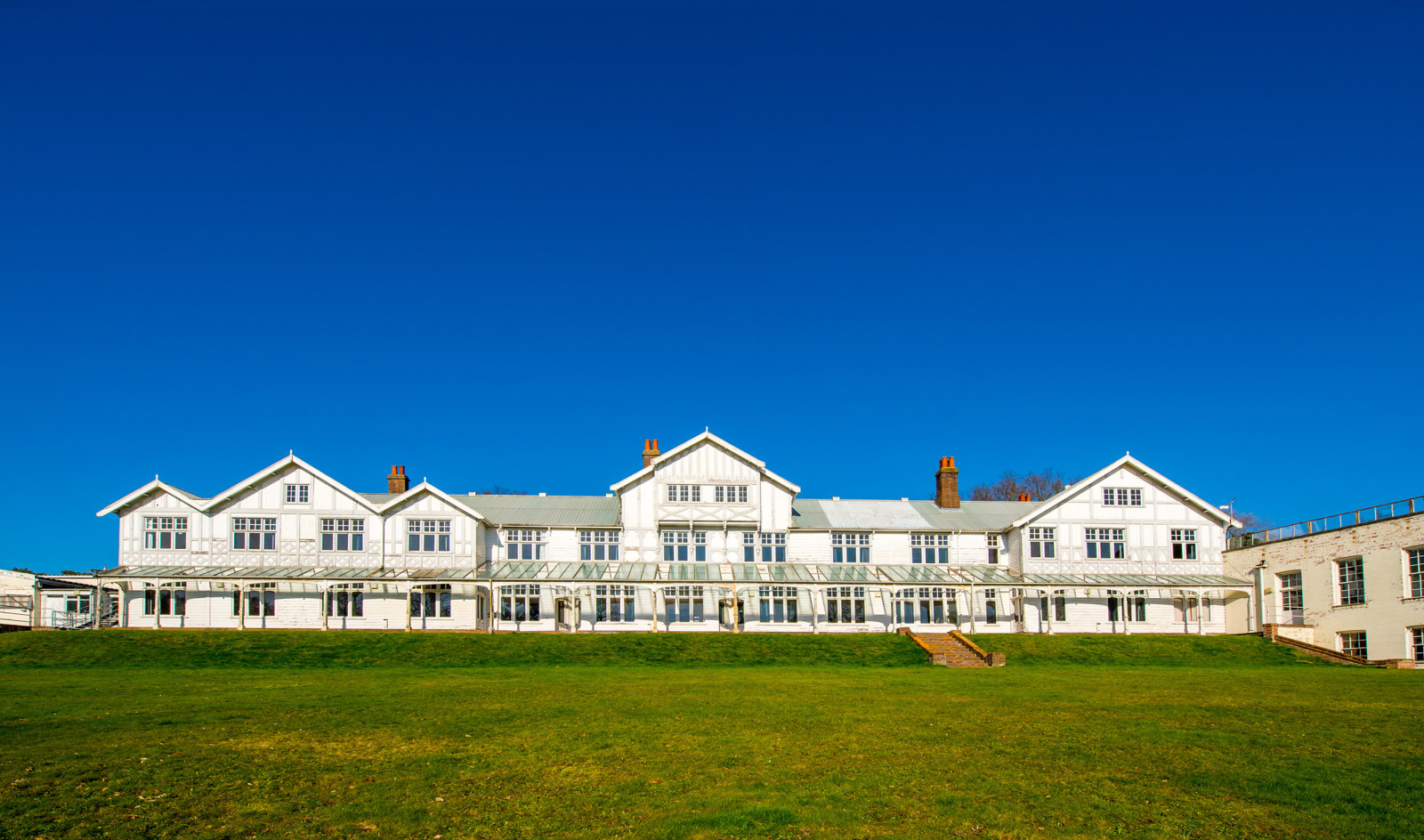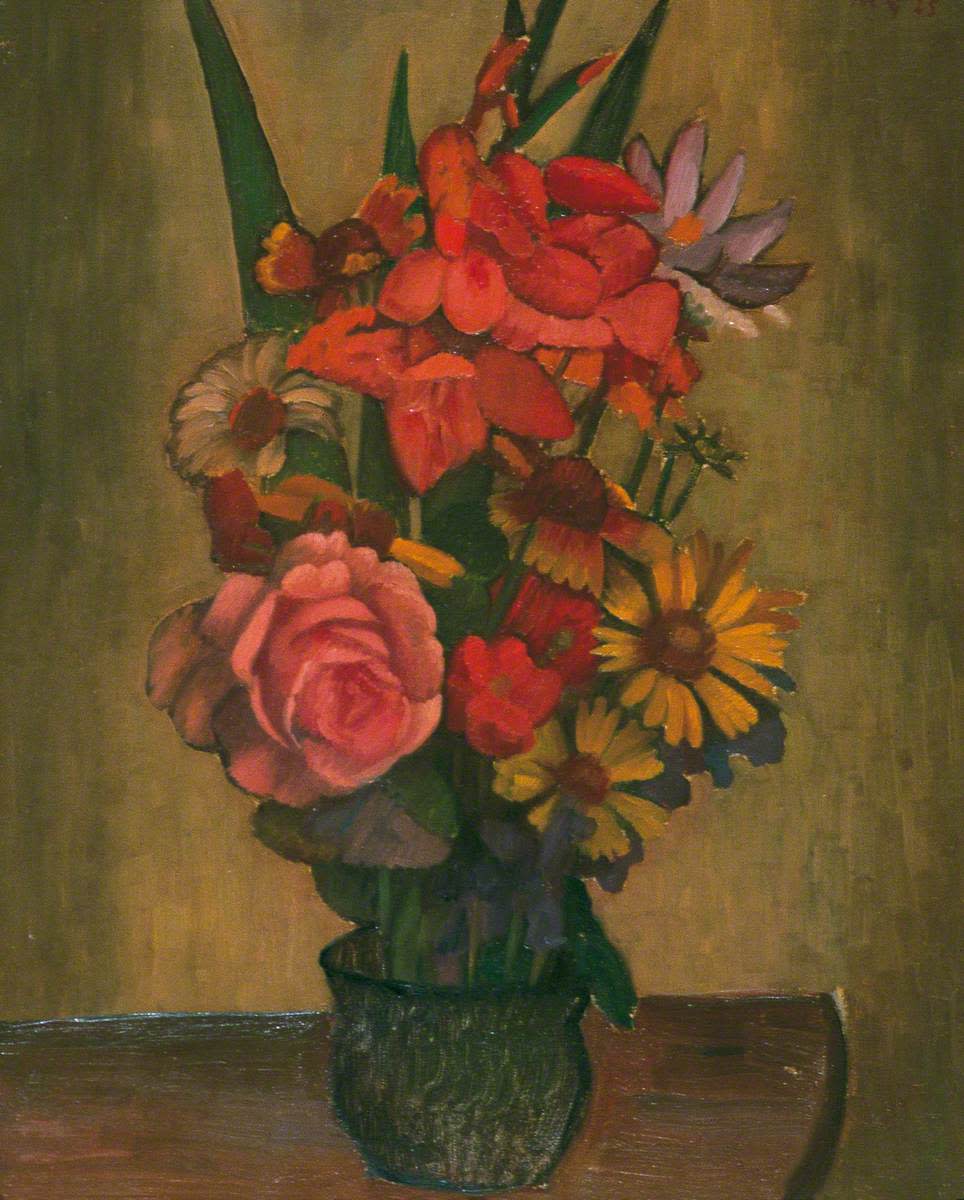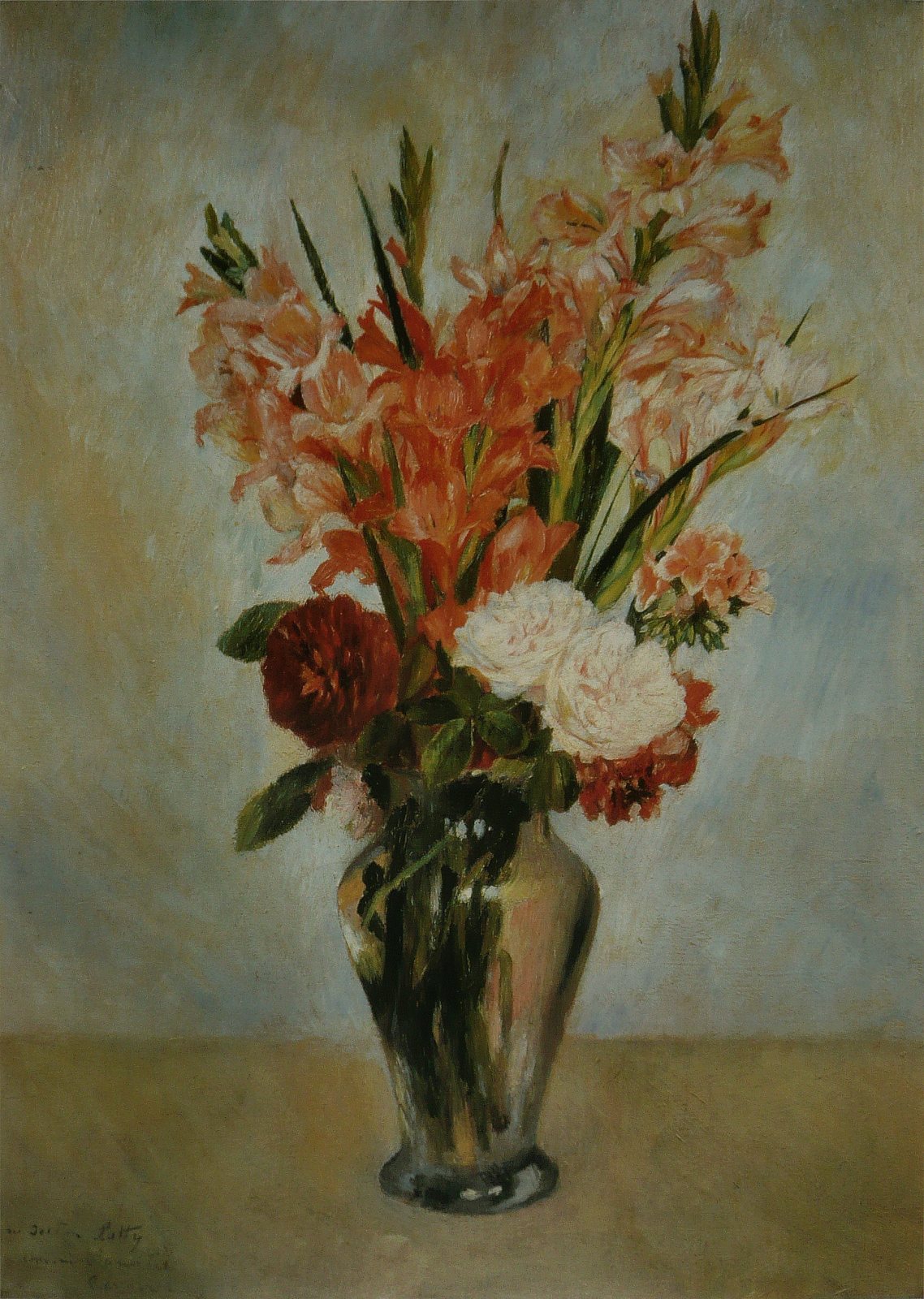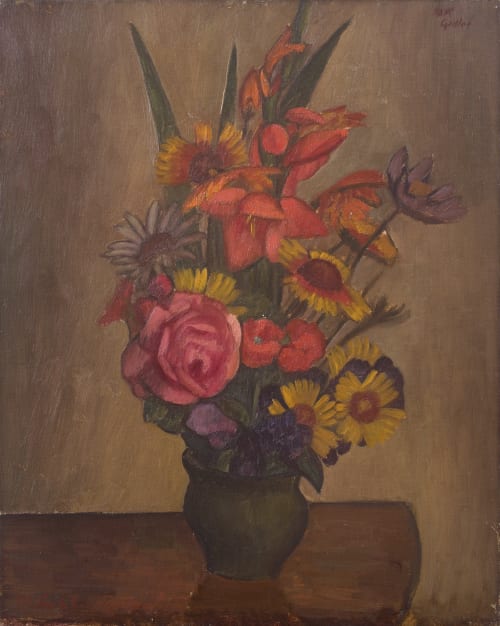Despite perennial bouts of mental and physical ill health, Mark Gertler remained intensely focused on his work. The mid-1920s marked the height of his interest in the Impressionist artist Pierre-Auguste Renoir.
The sanatorium at Mundesley, Norfolk, opened in 1899. An exclusive private hospital for tuberculosis patients, it was built near a pleasant village notable for its sandy beach and an abundance of flora and fauna. (In the 1880s and '90s, the transactions of the Norfolk and Norwich Naturalists' Society remarked various rare discoveries nearby like a King Fish and a Red-throated Diver.) It is a mark of the sanatorium's success that it was extended in 1923. Two years later, after collapsing with a haemorrhage, the painter Mark Gertler (1891-1939) arrived there for a period of rest and recuperation which lasted from September until December of 1925. He later returned there in 1929 and 1936 - an expensive form of treatment paid for by wealthy friends.


Gertler's Vase with Flowers was painted just before his admission to the sanatorium. The blooms depicted are summer flowering varieties and the picture was executed at Frinton-on-Sea in Essex where Gertler was staying in August 1925. A nearly identical version of the painting called Bouquet of Flowers is owned by the Government Art Collection and was evidently painted using the same bunch of flowers: a pink rose at front left, some bright yellow daisies at lower right, and so on. The Government Art Collection's painting appears to have been executed later than Vase with Flowers, when some flowers had developed and others began to wilt - in Bouquet of Flowers, a few petals are missing from the Helenium at upper left and the Gladioli at the top of the arrangement have opened and grown larger.


In a letter to his friend Valentine Dobrée in April 1924, Gertler described his excitement seeing the work of Pierre-Auguste Renoir at Paul Rosenberg's Paris gallery.
Renoir is exquisite - delicious, but that is also his fault. I prefer him in reproductions […] It is too refined for us - too sweet. We must have something more brutal today […] Of course I was panting to get back to work again. My ideas somewhat changed - no big pictures, no romance, just chunks of Nature. It's design that matters, not subject.
Though Vase with Flowers is very far from something 'brutal', it is certainly a 'chunk of Nature': the diminutive ceramic vase overflows with daisies, Gladioli, poppies, a rose, and so on. The overwhelming impression of abundance, underpinned by vivid colouring and lively naturalism, is reminiscent of Renoir's own flower pieces.


Despite his recurring bouts of mental and physical ill health, Gertler remained intensely focused on his work. The early 1920s was a time of growing prestige for him and he enjoyed annual solo exhibitions at the Goupil Gallery between 1921 and 1924 and a fifth in 1926. In 1925, he was the first to be featured in the 'British Artists of To-day' series, a forerunner of the Penguin Modern Painters series which ran until 1929, with each publication consisting of a short introductory preface and 16 or 17 black and white reproductions. (Other subjects numbered Duncan Grant, Paul and John Nash, Frank Dobson and Gilbert Spencer, some of whom also showed at Goupil.)


By the end of the 1920s, Gertler's interest in Renoir was waning. He continued to paint flowers, but pictures he made from 1930 onwards began to use more elaborate compositions: where Vase with Flowers grew from a mood of quiet observation, subsequent works blend the flavours of de Chirico and Picasso. There were numerous bowls of fruit spread across a table, a violin case filled by both the violin and a bunch of flowers, and large vases overwhelmed by vast bouquets of mixed blooms. These late still-life works are rich with musical and olfactory sensuality. In contrast to such colourful fantasies, a work of the mid-1920s like Vase with Flowers is distinguished by its taut balancing of the picture's need for enticing colour and design, on one hand, and the obligations imposed by Nature, on the other - the interesting visual facts of how many petals there are, how open or how closed the flower is, and how one bloom fits in beside another.
IMAGES
1. Mark Gertler, Still Life, Vase with Flowers, 1925, oil on canvas, 50.8 x 40.6 cm | For Sale
2. The sanatorium at Mundesley, Norfolk
3. Mark Gertler, Bouquet of Flowers, 1925, Government Art Collection
4. Pierre-Auguste Renoir, Glaïeuls, circa 1885, Musée d'Orsay, Paris
5. Hubert Wellington, Mark Gertler (1925, The Fleuron)

